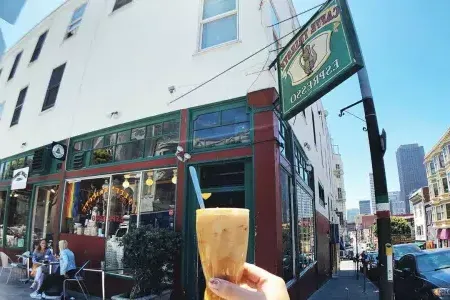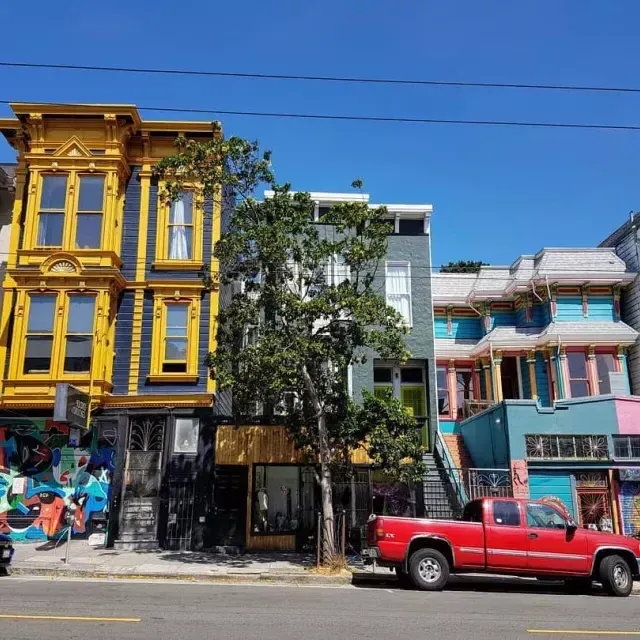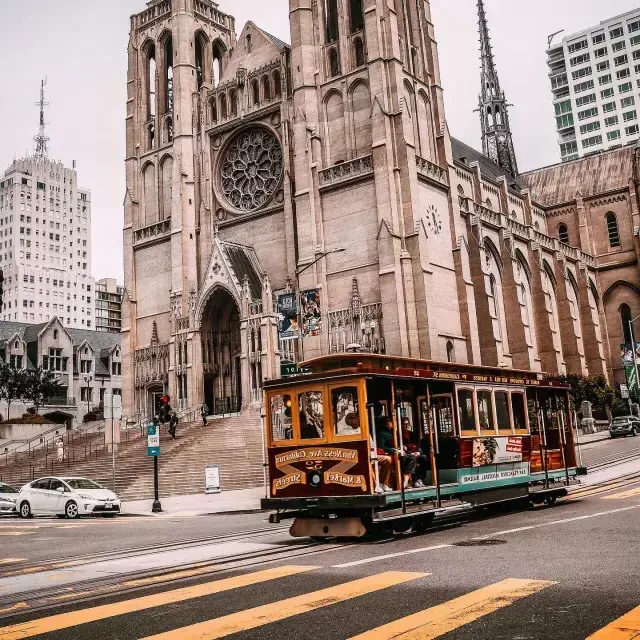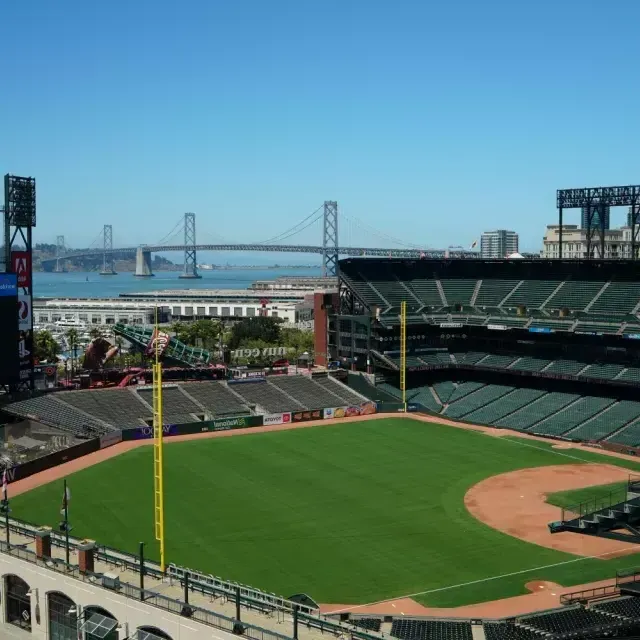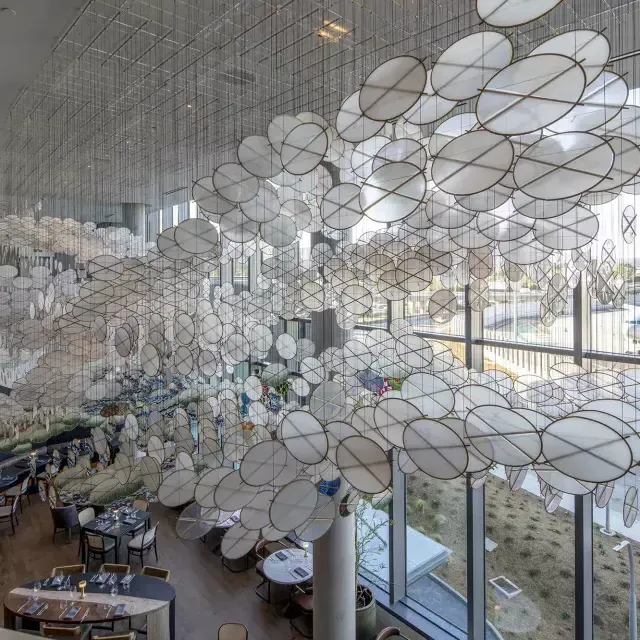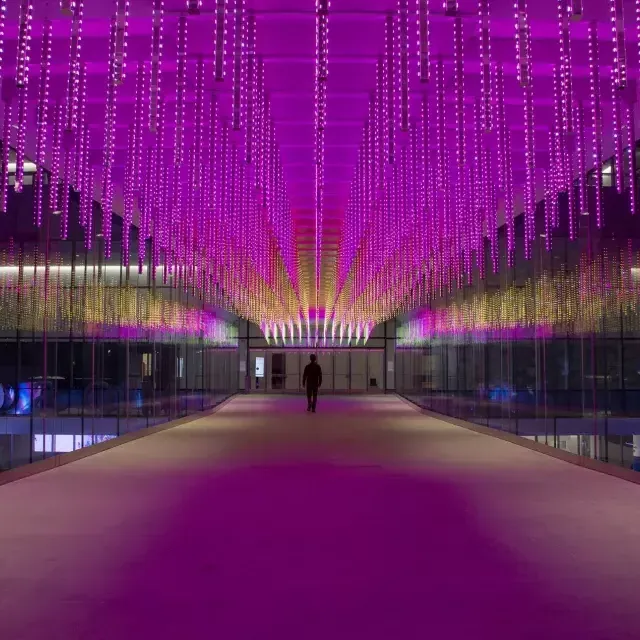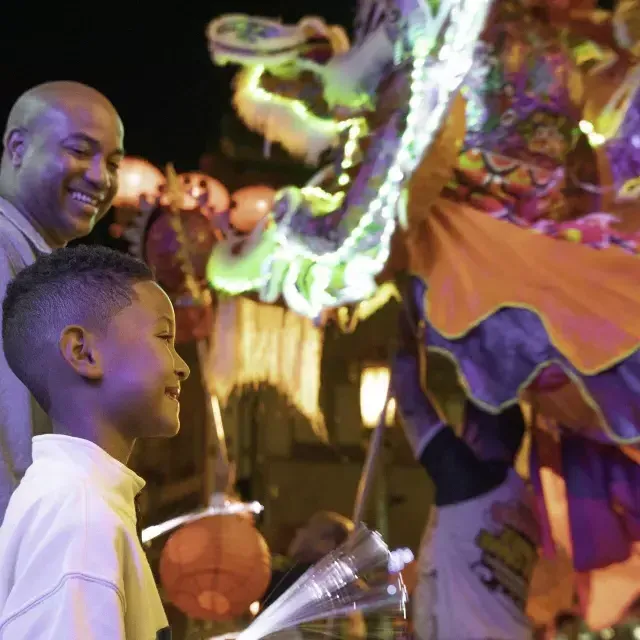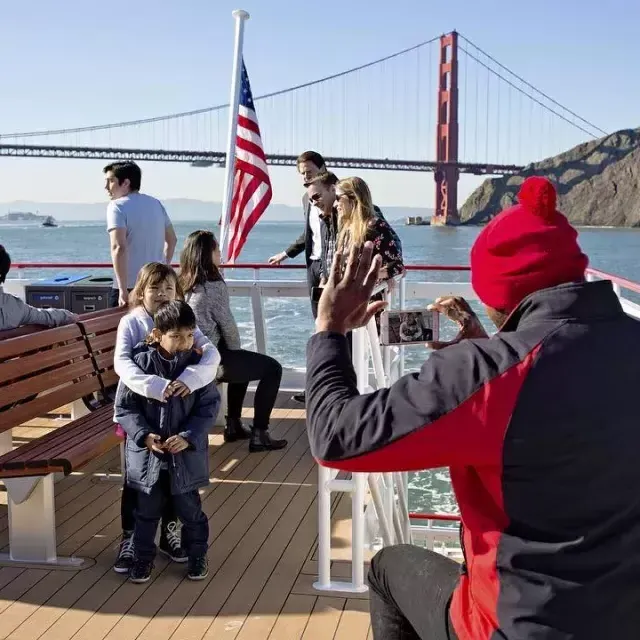
Explore Chinatown, Nob Hill & North Beach on a Self-Guided Walking Tour
Let local experts show you how to see the best of three of San Francisco's most famous neighborhoods.
Despite our famous hills and many microclimates, San Francisco is best explored on foot. If you're looking to explore some of San Francisco's most famous neighborhoods by pounding the pavement, try this self-guided itinerary from local authors Kristine Poggioli and Carolyn Eidson. What follows is 1 of 17 walks from their book, "Walking San Francisco's 49 Mile Scenic Drive", edited and condensed for our website. This walk is also available via app to make your walking tour even easier.
Chinatown Dragon's Gate
“All under heaven is for the good of the people,” says the inscription by Dr. Sun Yat-sen on Chinatown’s two-tiered, green-tiled-roof arch. The captivating entryway, built in 1970, faces the correct feng shui-approved direction (south) and is flanked by two lion statues meant to thwart evil spirits.
Old St. Mary’s Cathedral
The oldest cathedral in California, Old St. Mary’s, was built in 1854 by Chinese laborers using granite quarried in China and bricks shipped around Cape Horn from New England. In those wild, early days, bordellos surrounded the church. If men exiting those neighboring houses of ill-repute glanced up at the clock on the church bell tower, they would be admonished by a Bible verse inscribed there: “Son, observe the time and fly from evil.”
Grace Cathedral
The original Grace Cathedral was destroyed in the fire following the 1906 earthquake. The Crocker family donated their fire-ravaged Nob Hill property to the church as a new location for the Episcopal cathedral. Visitors from around the world come to see the stunning stained glass in the Gothic cathedral, the replica of Ghiberti’s Gates of Paradise, the two labyrinths, the Keith Haring AIDS Memorial Chapel altar piece, murals by De Rosen, the 44 bell carillon, three majestic organs and more. A self-guided tour is included with sightseeing admission.
BOOK YOUR TOURSan Francisco Cable Car Museum
Look into the bowels of the beast! The San Francisco Cable Car Museum is not just a fun place to learn about cable cars; it’s the actual working mechanical headquarters for the entire cable car network—and it’s free! You're invited to view the cable winding machinery and the underground cable as it pulls the cable cars.
Chinese Historical Society
Free to the public on the first Thursday of every month, the Chinese Historical Society of America Museum is the oldest organization in the country dedicated to the interpretation, promotion, and preservation of the social, cultural and political history and contributions of the Chinese in America. Closed Sundays.
Waverly Place
The alleyway looks so adorable; you might never guess this was the sight of a vicious Tong battle over a Chinese girl in 1879. Tongs began as Chinese protective associations but became organized crime gangs.
Shortcut!
Cut left through Portsmouth Square to see the plaque for the first public school in California, a replica of the “Goddess of Democracy" used in Tiananmen Square, and see dozens of impromptu card and domino games enjoyed by Chinatown residents.
Portsmouth Square
In 1846, Capt. John B. Montgomery of the sloop-of-war Portsmouth marched into the then-Mexican town’s central square, raised the American flag, and declared Yerba Buena and its few hundred inhabitants part of the United States. A year later, the city was renamed San Francisco.The square was still a mere cow pen surrounded by tents in 1848 when the discovery of gold was announced here. By 1850, an entire city of 25,000 residents had built up around the square.
Buddha’s Universal Church
Built over a decade by volunteer labor from congregants, this is one of the largest Buddhist churches in the United States. Before that, the dilapidated brick building was most famous as the factory that sparked the 1938 Garment Workers Strike.
CCSF Chinatown Branch
Founded in 1935, today City College of San Francisco is one of the largest community colleges in the country. Multicultural, multi-campus, offering 50 academic programs, 100 occupational disciplines, and serving 70,000 students, CCSF provides an invaluable service to the citizens and industries of San Francisco.
Manilatown I-Hotel
The International Hotel was built in 1907 as low-cost housing in the heart of Manilatown, but it became ground zero for the social revolution in the late 1960s. Mass evictions by developers at the I-Hotel made it a symbol for every group fighting for rights in the turbulent '60s and '70s and inspired massive protests. Three decades later, the Manila Heritage Foundation and 100 affordable housing units were constructed, and the I-Hotel was born anew. Step inside and learn more.
Columbus Tower/Sentinel Building
The seven-story, copper-green building at Columbus and Kearney survived the 1906 earthquake, then allegedly went on to be the place where Caesar salad was invented, the Kingston Trio recorded, Barbra Streisand sang, and Francis Ford Coppola’s American Zoetrope Studios was headquartered. The Coppola story is probably true.
Vesuvio Café
Popular Beat-era hangout known for poetry and jazz. If the walls could talk...
City Lights Bookstore
The first paperback-only bookstore in the U.S. Owner Lawrence Ferlinghetti was charged with obscenity for publishing Alan Ginsburg’s "Howl and other Poems". He won the court battle and his support of Beat poets launched the Beat movement.
Broadway and Columbus Ave.
North Beach—San Francisco’s Little Italy, former center of Beatnik culture, and “red light” district—was established during the Barbary Coast days (1848-1858). Back then, North Beach actually was a beach. The cove was filled in with soil and landfill after the1906 earthquake and fires.
Condor Club
The Condor Club fired a major salvo in the sexual revolution when it became the world’s first topless (1964) and bottomless (1969) entertainment venue in the country. The 40-foot neon-lit cartoon image of stripper Carol Doda with two red lights on her…bikini top…came down in 1992 (but if you’re brave enough to peek inside, you’ll get a glimpse of it right by the front door!).
The Beat Museum
The Beats were a collective of writers, artists, and thinkers, including Jack Keruoac, that congregated in 1950s San Francisco. The museum is home to an extensive collection of Beat memorabilia, including original manuscripts, rare books, letters, personal effects, and cultural ephemera.
“Language of the Birds”
The illuminated books flying past the traffic island at this intersection are the first of two public art installations by Brian Goggin and Dorka Keehn found on San Francisco's 49 Mile Scenic Walk.
Grant Ave. and Columbus Ave.
Columbus Ave. is the typical route through North Beach, but Grant Ave. is North Beach for the locals, offering boutiques, bakeries, music, antiques, art, and more. Check to see if you can spot the 49 Mile Drive graffiti wall on the east side of the street.
Caffe Trieste
Founder Giovanni Giotta claims Caffe Trieste was the first espresso house on the West Coast and that he taught Americans to love cappuccino. In the 1950s and 60s, this was Beatnik Central.
Filbert St. Stairs to Coit Tower
Yes, it’s steep, but you’ve walked halfway up Telegraph Hill already. Why not go all the way up and see Coit Tower in person?
Fire-truck chasing, fireman-loving Lillie Coit bequeathed one-third of her estate to beautify San Francisco. Whether the tower named in her honor represents a fire hose, a Greek column, or something else honoring the strapping young pioneer firefighters of Engine Company #5 is in the eye of the beholder.
From Grant Ave., turn right on Filbert St. You’ll see a green sign pointing to “Stairs to Coit Tower” at the end of Filbert St.
Start climbing! For a break, stop halfway up, turn around, and admire the views.
When you get to the top, take some incredible photos, explore the tower (admission to view its famous murals is free), and then head back down to Grant Ave. to rejoin the route.
Joe DiMaggio Playground
As you pass the Joe DiMaggio Playground, named for the local baseball legend, to your left on Lombard St., you may hear the bells from Saints Peter and Paul Cathedral.
Fior D’Italia
Fior D’Italia bills itself as America’s oldest Italian restaurant.
Ginsberg's Dublin Pub
This was once the site of Ginsberg's Dublin Pub, at 400 Bay St., a favorite haunt of sailors and fishermen. It was built in 1906 and stood on this spot until 2011.
International Longshore and Warehouse Union (ILWU)
Beginning in 1902 on the docks of the Pacific Coast, ILWU workers “built a union that is democratic, militant and dedicated to the idea that solidarity with other workers and other unions is the key to achieving economic security and a peaceful world” and the best way “to achieve abetter life for themselves and their families.”
The end of your self-guided tour will leave you a few short blocks from Fisherman's Wharf and PIER 39, two other classic San Francisco destinations worth exploring.
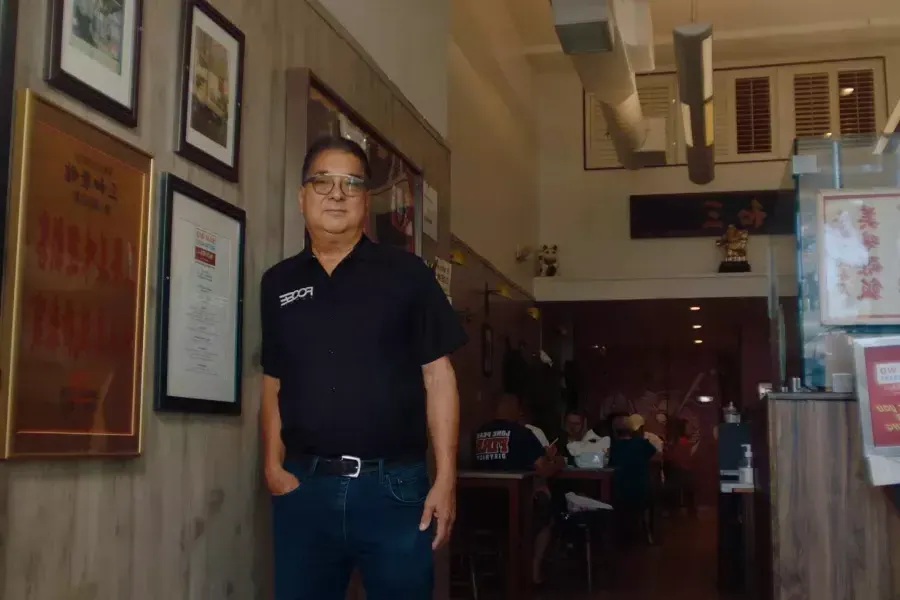
Heart of the City: Chinatown
Learn from the residents and business owners of Chinatown about why this neighborhood is the heart of the city.
Explore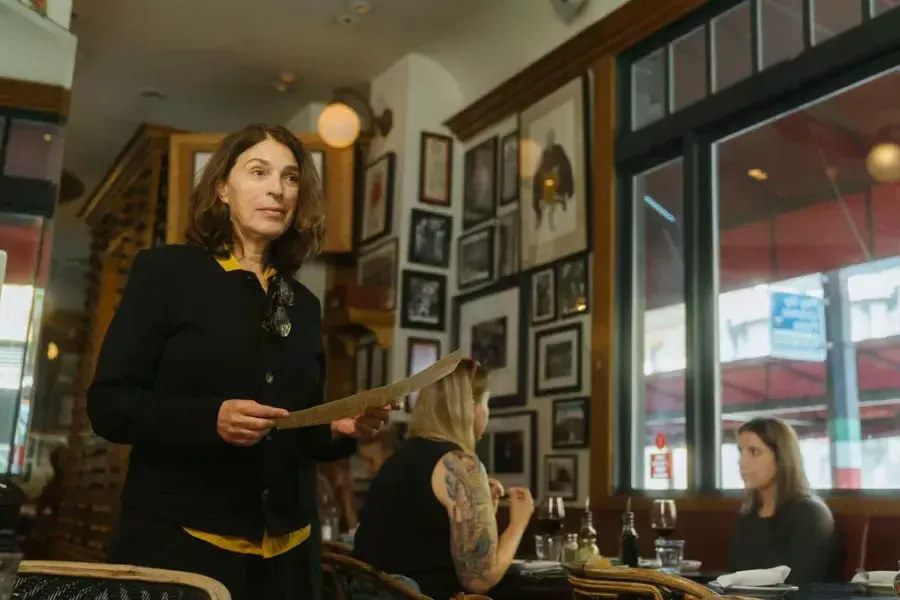
Heart of the City: North Beach
Learn from the residents and business owners of North Beach about why this neighborhood is the heart of the city.
Explore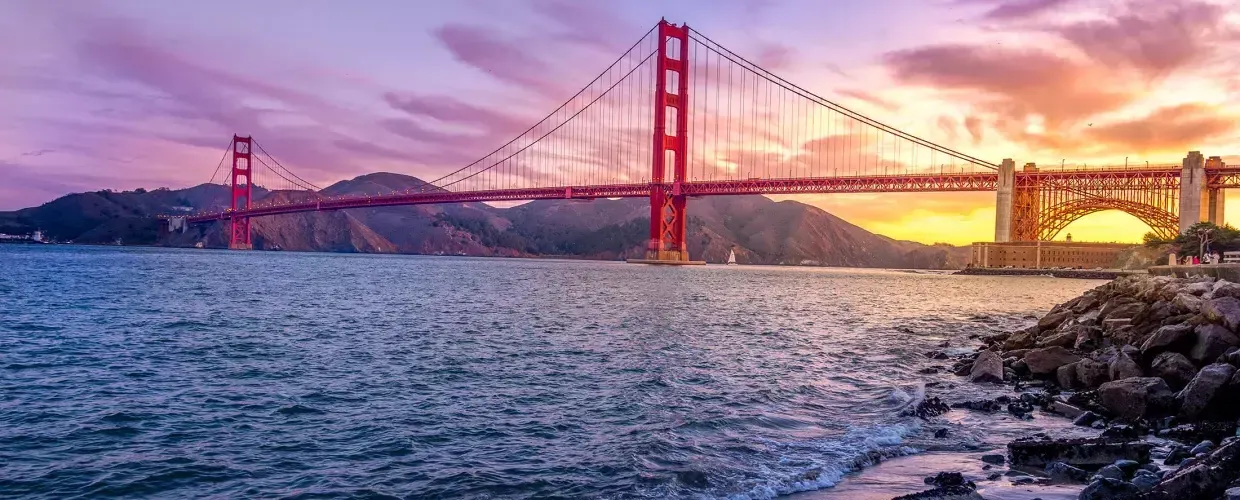
Sign Up for Our Newsletter
Be the first to know about upcoming events and festivals, new restaurants, special deals, and everything else happening in the City by the Bay.
